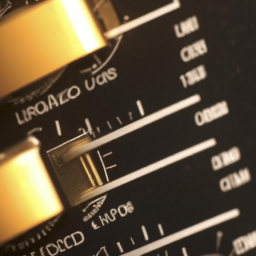
Introduction to Oscillators
Oscillators are electronic circuits that generate repetitive waveforms or signals. These waveforms can be in the form of sinusoidal, square, triangular, or sawtooth waves. Oscillators are commonly used in various electronic devices such as radios, televisions, computers, and even musical instruments.
Types of Oscillators
There are several types of oscillators, each with its own unique characteristics and applications. Some of the most common types include:
- LC Oscillators: These oscillators use inductors (L) and capacitors (C) to generate oscillations. They are commonly used in radio frequency (RF) applications.
- Crystal Oscillators: Crystal oscillators utilize the piezoelectric properties of crystals to generate stable and precise oscillations. They are widely used in clocks, microprocessors, and communication devices.
- Relaxation Oscillators: These oscillators generate waveforms by charging and discharging capacitors. They are often used in applications where simplicity and low cost are important.
- Phase-Shift Oscillators: Phase-shift oscillators use resistors and capacitors to produce oscillations. They are commonly employed in audio and radio frequency applications.
Working Principle
Oscillators work on the principle of positive feedback. They consist of an amplifier and a feedback network that sustains the oscillations. The feedback network feeds a portion of the output signal back to the input of the amplifier, reinforcing the signal and maintaining the oscillations.
Designing an Oscillator
Designing an oscillator requires careful consideration of the desired frequency, stability, and waveform characteristics. Here are some general steps to design a basic oscillator:
- Select the oscillator type: Determine the suitable oscillator type based on the desired frequency range and application requirements.
- Choose the components: Select the appropriate resistors, capacitors, inductors, and other components based on the oscillator type and desired frequency.
- Calculate component values: Use the oscillator’s design equations to calculate the required component values for the desired frequency.
- Build the circuit: Assemble the oscillator circuit using the chosen components and follow the circuit diagram or schematic.
- Test and refine: Connect the circuit to a power supply and test the output waveform using an oscilloscope or other measuring instruments. Adjust component values if necessary to achieve the desired waveform and stability.
Applications of Oscillators
Oscillators find applications in various fields, including:
- Communication systems: Oscillators are used in transmitters and receivers to generate carrier signals.
- Audio equipment: They are employed in audio synthesizers, guitar amplifiers, and other musical instruments.
- Timing and synchronization: Oscillators are used in clocks, timers, and digital systems to provide accurate timing and synchronization.
- Signal generation: They are used in signal generators to produce test signals for analysis and troubleshooting.
- Frequency modulation: Oscillators play a crucial role in frequency modulation (FM) radio broadcasting.
Conclusion
Oscillators are essential components in various electronic systems and devices. They provide stable and repetitive waveforms that are crucial for communication, timing, and signal generation. By understanding the different types of oscillators and their applications, engineers and hobbyists can design and utilize oscillators effectively in their projects.